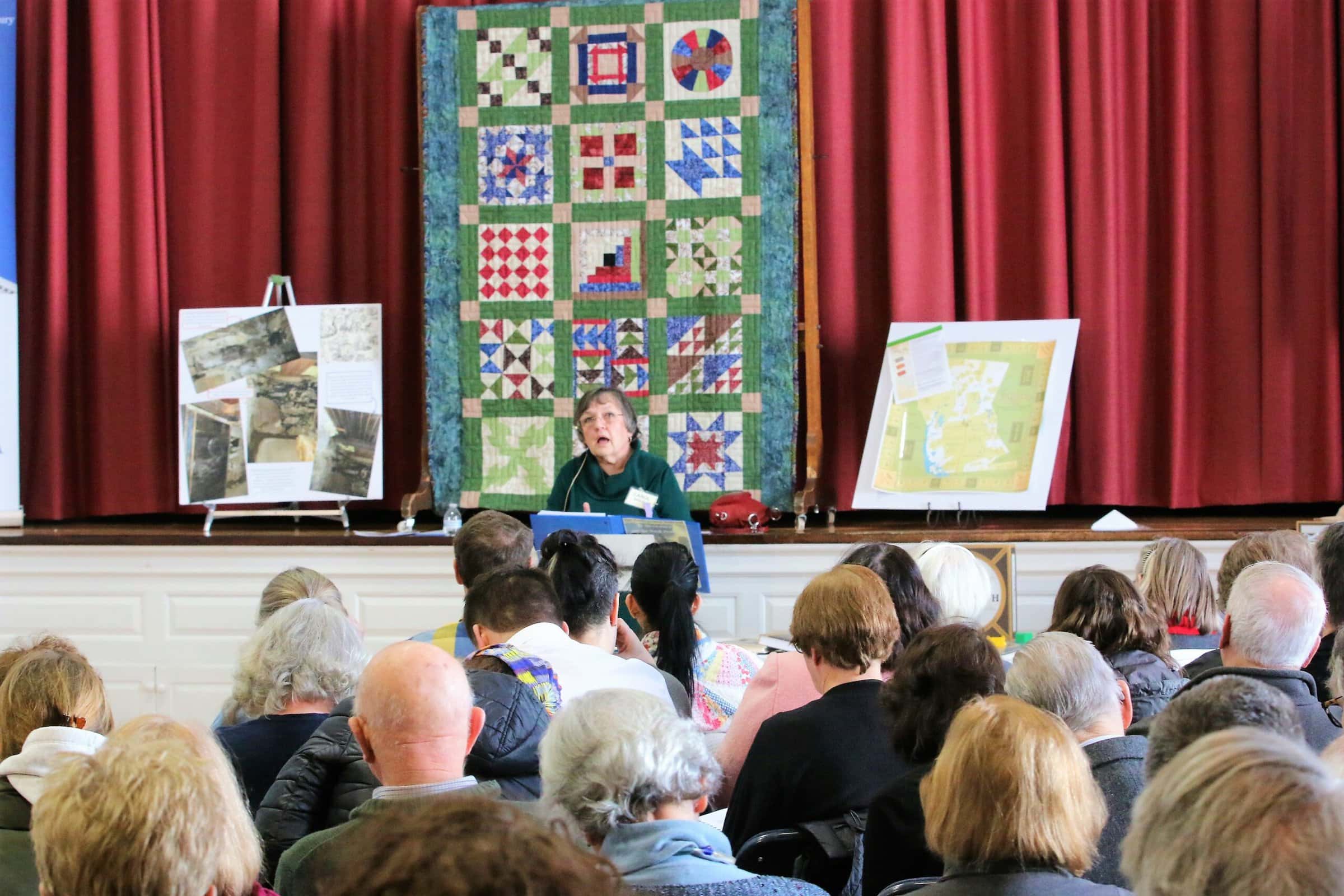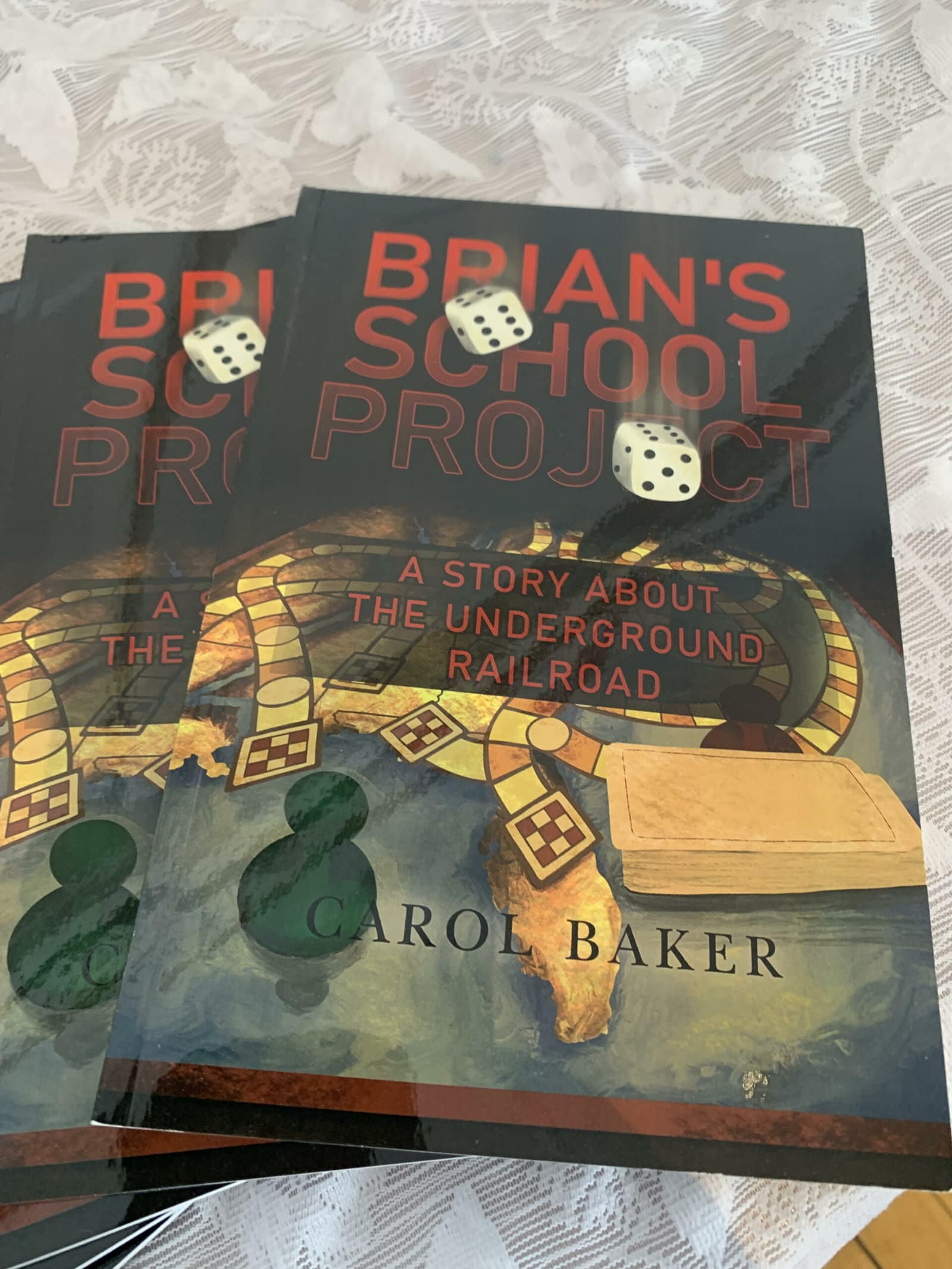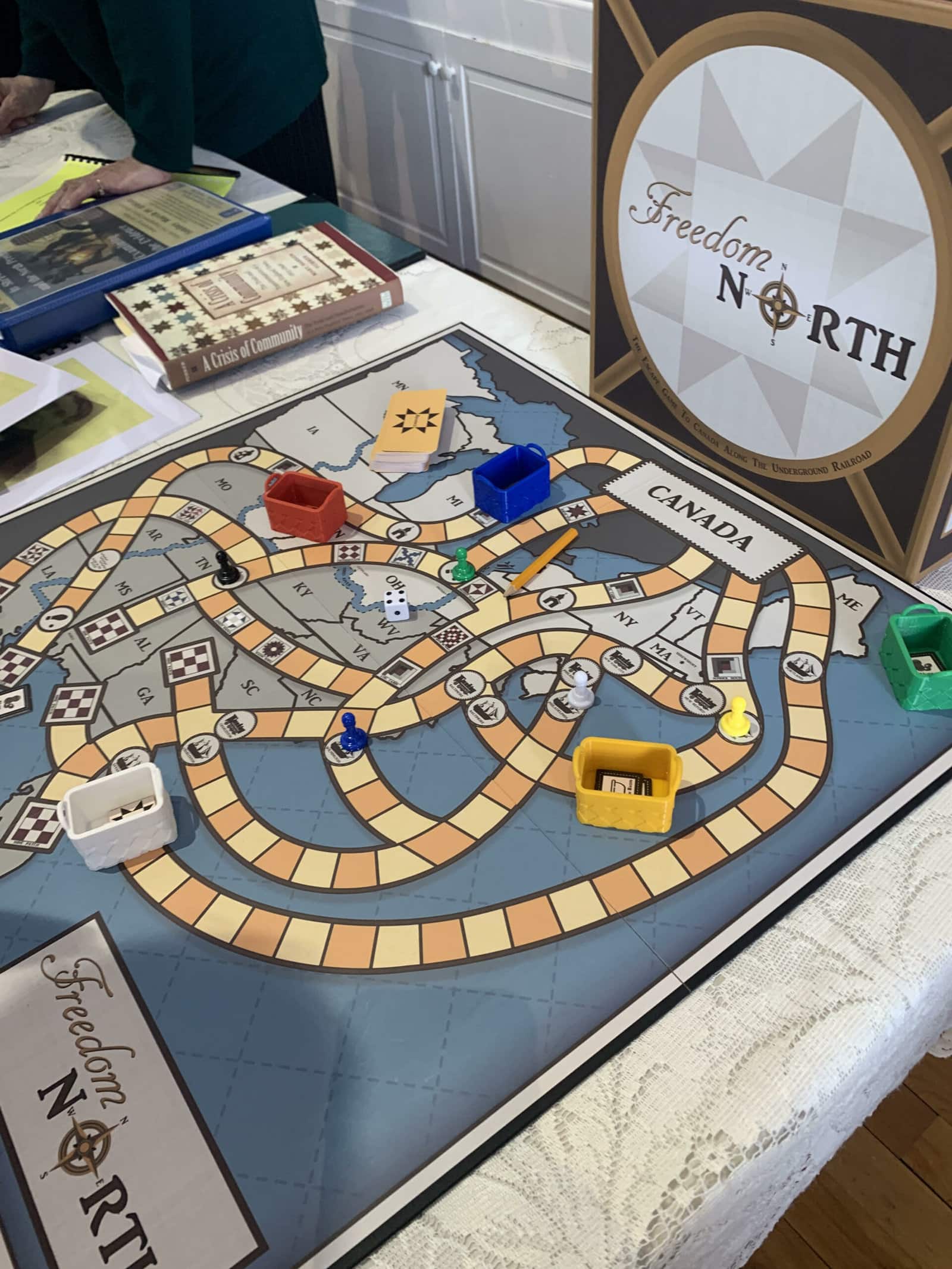
SHREWSBURY – Was Shrewsbury a station on the Underground Railroad?
There is no concrete record of the town being part of the legendary network of safe houses and conductors that helped as many as 100,000 slaves flee captivity in the southern states to freedom in the north and into Canada. However, local historian Carol Baker believes she and her team have uncovered enough circumstantial evidence to make the case.
On March 19, Baker gave a presentation at the First Congregational Church titled “The Underground Railroad in Shrewsbury and the North Precinct, Examining the Evidence.” More than 100 people attended the talk and each received a copy of a dossier, including nearly 150 pages of evidence both hard and anecdotal that Baker and her team compiled.
300th anniversary
The presentation was part of the First Congregational Church’s yearlong 300th anniversary celebration. In fact, it was with the upcoming anniversary in mind that nine church members began the “Our Story Ministry” in 2017. The members were charged with researching the history of the church, which was founded a full four years before the Town of Shrewsbury was incorporated.
“We started out with nine and that became five,” said Baker. “We became known as the ‘church historians.’”
It was through this ministry work that Baker and her teammates began to uncover information that seemed to point toward the involvement of Shrewsbury, and First Congregational, in the Underground Railroad.
Her presentation on March 19 was the culmination of five years of research.

At the center of their findings was Rev. Joseph Sumner (1740-1824), second minister of the First Congregational Church. His residence, which is presently the Chiampa Funeral Home, had a hidden crawl space. He also kept a journal, which he called “Life Notes,” in which Baker found notations she believes connected to harboring runaway slaves.
She also talked about other locations such as the former Pease Tavern and the Samuel Haven House that had hiding spaces, tunnels or other evidence of connection to the Underground Railroad.
Over the course of five years, Baker’s research took her to communities in central and eastern Massachusetts, tracking leads through historic archives, town clerk records and property deeds.
As Baker pieced together the historical breadcrumbs, she found herself centered on five people she dubbed heroes. They include Sumner, the first black resident of Shrewsbury George Bush, owner of the Pease Tavern Levi Pease, Austin Bearse and Benjamin Prentiss.
Prentiss was a slave who escaped his owner in Connecticut and was later recaptured in Shrewsbury. After being returned to Connecticut, he escaped again. He settled in Stow and later became the first black resident of Marlborough.
Freedom North
Baker’s discoveries spurred her to write a book for grade school students, focused on the Underground Railroad. The book, titled “Brian’s School Project,” centers on a quartet of fourth graders interested in learning more about their town’s involvement in the Underground Railroad. As a school project, they create a board game called “Freedom North” based on their findings.
Having detailed the game in the book, Baker went the next step and created the game “Freedom North” in real life.

“I wrote the book first because I was doing it for the children. The game was part of the plot of the book, and so I created the game,” she said. “But as I put it together, I began to think that all of this information might be of interest to adults also. So I started to compile all the information in this three-ring binder and tried to line it up in some sort of order.”
The binder became the dossier that was handed out at the March 19 presentation.
“I’m not looking to give answers. I want to provide all the information that we found and let people read it and decide for themselves,” said Baker.
As children have been a driving motivation in Baker’s efforts, they also were able to participate in the March 19 presentation. While the adults were guided through Baker’s dossier upstairs, a group of about 20 children had the chance to play the game “Freedom North” downstairs.
“Brian’s School Project” is available online at https://www.barnesandnoble.com/w/brians-school-project-carol-baker/1143119878. Baker is hoping to be able to get “Freedom North” mass produced beyond the 15 copies of the game presently in existence.
RELATED CONTENT
First Congregational Church of Shrewsbury celebrates 300 years

















